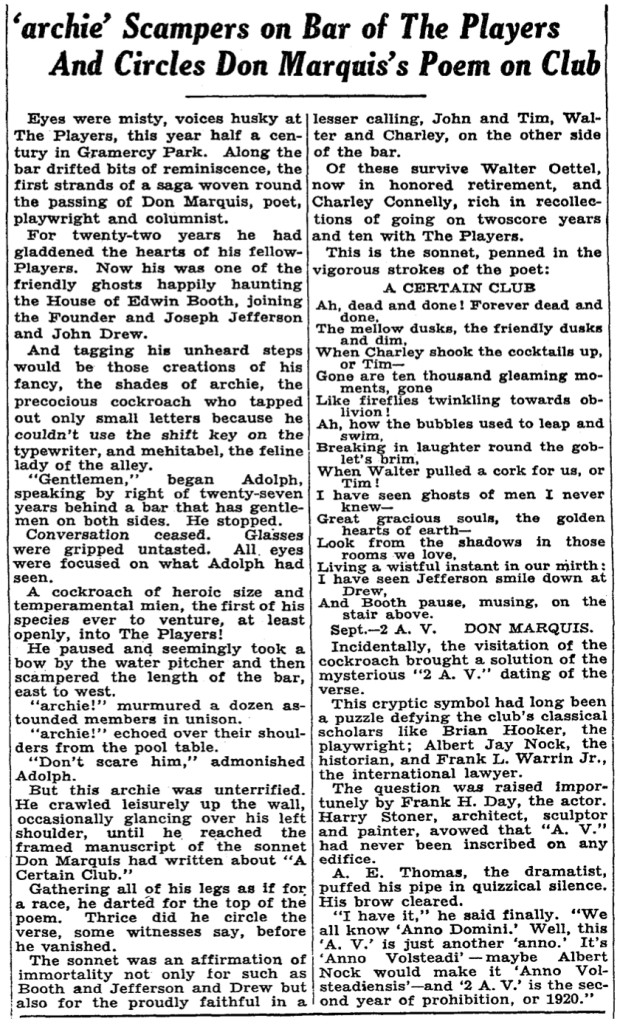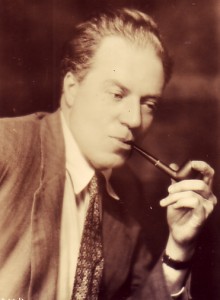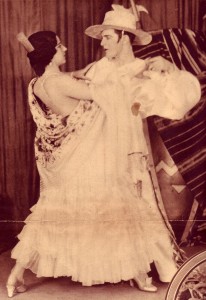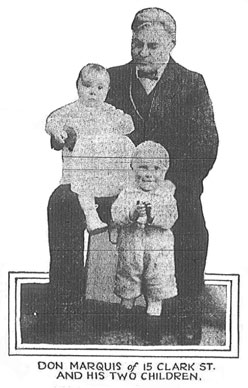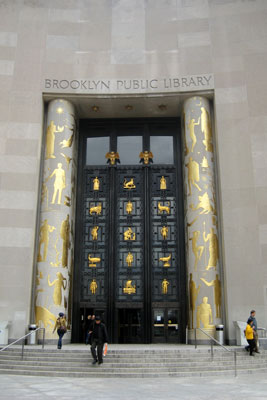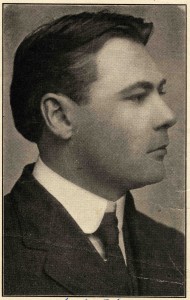 It was 100 years ago, on March 20, 1916, that Don Marquis added a fanciful bit of filler material to his daily newspaper column in The Evening Sun. He claimed that a cockroach had crawled onto his typewriter the night before and left a message by diving on the keys, one at a time. Many more messages would follow from the labors of Archy the cockroach, including wild tales of a neighborhood alley cat, Mehitabel. It was brilliant stuff, and it’s still with us today. Let’s celebrate!
It was 100 years ago, on March 20, 1916, that Don Marquis added a fanciful bit of filler material to his daily newspaper column in The Evening Sun. He claimed that a cockroach had crawled onto his typewriter the night before and left a message by diving on the keys, one at a time. Many more messages would follow from the labors of Archy the cockroach, including wild tales of a neighborhood alley cat, Mehitabel. It was brilliant stuff, and it’s still with us today. Let’s celebrate!
Plans in New York City include performances of actor Gale McNeeley’s one-man show, “Archy and Mehitabel”; a walking tour of New York’s old Newspaper Row on Sunday, March 27; and a special gathering of Marquis fans on the evening of Tuesday, March 29, at Jimmy’s No. 43, a bar/restaurant in the East Village, where tales will be told, Archy poems will be sung, and toasts will be raised to Don Marquis, Archy and Mehitabel.
Further events and exhibits will take place throughout 2016, all under the banner of archyFest! See below for event details: Continue Reading →


